New York, New York!
It’s a question that must be on the minds of goalies everywhere: do goaltending skills translate from sport to sport? I decided to find out.
Fundamentally, goaltending in all sports is a matter of geometry and timing. There are obvious differences in the projectiles, net dimensions, and game rules, but the basic idea remains the same: prevent the opposition from scoring by either catching or deflecting the shot.
My friend Tyler (of waterfall and grizzly bear fame) happened to be in New York for the week on business when I arrived in the City. He had connections to the indoor soccer community from back when he lived there, so he thought that there might be a way to finagle me onto a field for at least a few minutes.
I arrived at Chelsea Piers in the evening. I had played hockey at the Sky Rink earlier in the day; in my return, I was to experience the field house portion of the expansive complex.
On my walk over from my friend Travis’s apartment in the East 20s, I had stopped by Modell’s on Avenue of the Americas to pick up the only really specialized component in a soccer goalkeeper’s ensemble: gloves. Fortunately, basic gloves can be had for under $20, so it was nothing like the bank-breaking experience of getting together my current set of hockey goalie kit.
Tyler was subbing for one of the teams playing that hour. We reached an agreement with the team captain that if the score was decisive in the last few minutes of the game, they’d send me in. It was not to be; the game was within one goal until an empty-netter was scored in the closing seconds. I stayed on the sidelines.
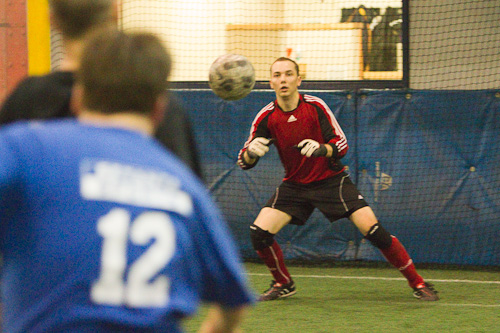
Tyler, who actually is a soccer goalkeeper, makes a save on a shot by a celebrity (blue #12). Bonus points if you can identify the celeb.
We were left with a few minutes between the end of that game and the start of the following game. It wasn’t much time, but it would be better than nothing. I jogged to the goal and started taking shots.
Since we were on an indoor soccer field, there were immediate similarities to hockey: the field was the size of a rink and was bounded by boards. There were differences beyond the obvious lack of ice: the goal was set into the back wall instead of being in front of it, the penalty area (where the goalkeeper is privileged) was far larger than the crease, and the net itself was much larger than a hockey net (though smaller than a field soccer goal).
Taking shots felt similar to hockey. I had to think about angles, predict whether the shots would be high or low, and so on.
Although I wasn’t very aware of it in the moment, inspection of photos from the event shows that I executed the saves themselves in a hockey-esque manner.
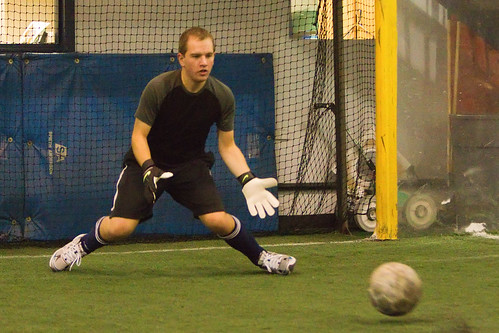
Making a save. It kind of looks like I'm trying to butterfly. Note how my ankles are locked: it isn't possible or desirable to have much lateral flex in one's ankles while wearing skates, so my instinct apparently carried over to the turf. (Photo: Tyler)
When shots were low, I butterflied. When shots were high, I moved into them as if to block with my chest (though in fact I used my hands).
The most notable carryover from hockey was in my feet. In hockey skates, it isn’t possible or desirable to have one’s ankles bend laterally. Shoes don’t have the same restrictions, but I think that instinct got the best of me: my ankles were locked in almost all of the photos I have of me playing that night. It was as if I was trying to have my non-existent skate blades bite the ice.
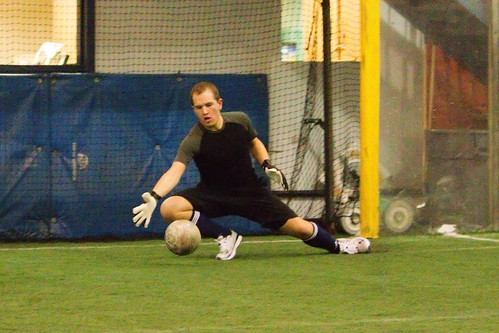
Again, my trailing foot is not planted. I'm not sure what motivated me to move like this. If a similar shot were coming at me on the ice, I'd probably be using a butterfly slide, and for that my legs would be in entirely different orientations. (Photo: Tyler)
It was nice to have the object coming at me be so large. A soccer ball appears as a circle about 8.5 inches in diameter. Compare that to a puck, which, when properly shot, appears as a rectangle 1 inch by 3 inches.
I’m not sure how fast the balls were coming at me on the shots I faced, but they certainly seemed slower than the hockey shots I face on a regular basis. I did notice the sound of the ball flying through the air more than I notice the sound of the puck doing the same.
So, how was it? For the few minutes I was out there, it was fun. Enough fun that I’d like to try it again — hopefully in an actual game.
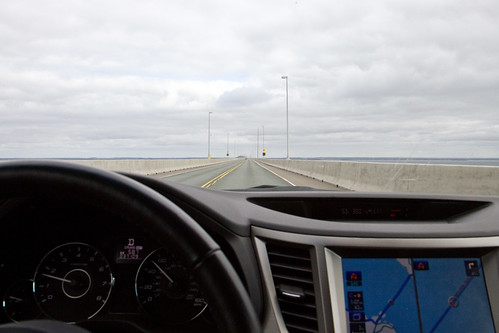
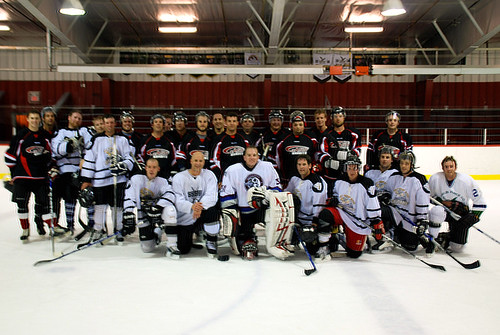



Recent Comments